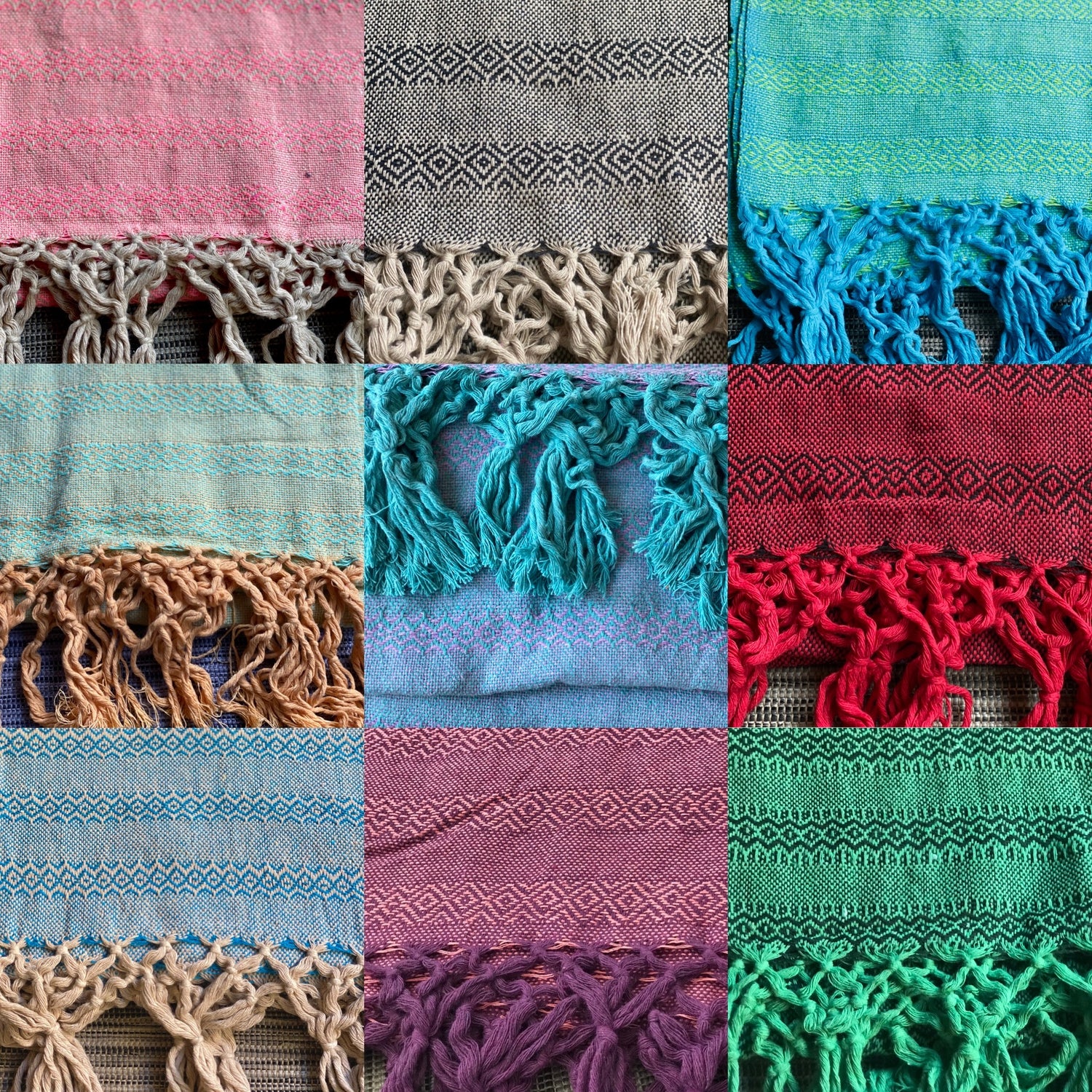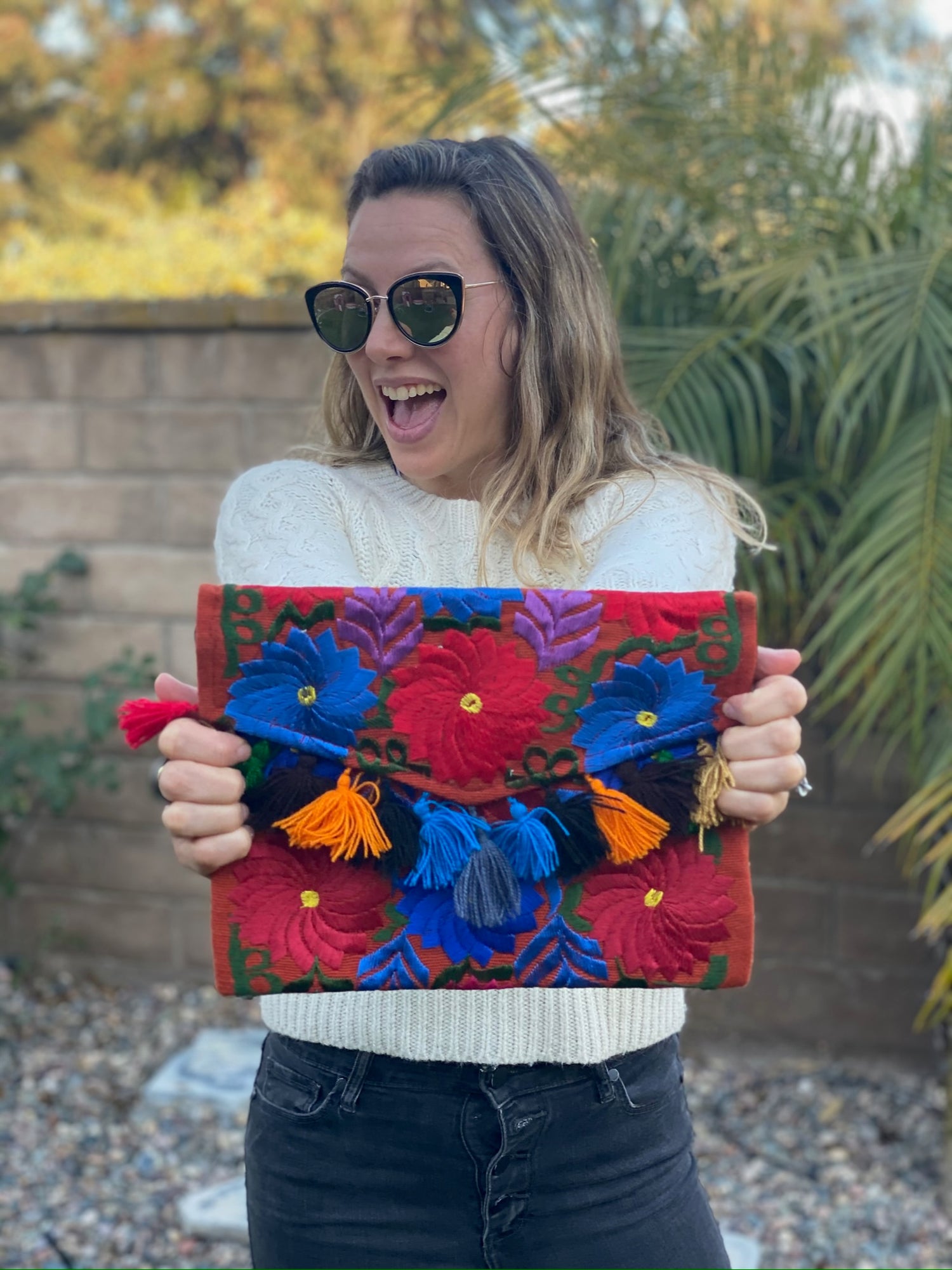The rebozo is a traditional Mexican shawl that holds deep spiritual and religious meaning for many.
This beautiful garment not only showcases the rich heritage of Mexico but also serves as a connection to the sacred in everyday life.
For generations, women have used the rebozo in various rituals, symbolizing protection and support during significant life events, such as birth and marriage.

The rebozo's vibrant colors and intricate designs are more than just aesthetic choices; they reflect the wearer’s identity and beliefs.
This cultural artifact is often used in spiritual practices, providing a sense of comfort and connection while reinforcing ties to family and community.
By understanding the spiritual essence of the rebozo, you can appreciate how it transcends its role as a mere piece of fabric to become a powerful symbol of faith and tradition.
As you explore the significance of the rebozo, you will uncover the layers of history and emotion woven into its fabric, enriching your knowledge of Mexican culture and its enduring values.
Key Takeaways
- The rebozo represents a blend of spirituality and cultural identity.
- Its colors and designs convey personal and communal significance.
- The shawl plays a vital role in important life events and rituals.
Historical and Cultural Roots of the Rebozo

The rebozo has deep historical and cultural roots in Mexico, reflecting a blend of indigenous and colonial influences. This section explores its origins, symbolism in Mexican heritage, and its relevance in contemporary society.
Origins and Evolution in Mesoamerica
The rebozo's history begins in Mesoamerica, where indigenous women crafted it from natural fibers like cotton and agave.
Artisans used traditional techniques, such as the backstrap loom, to weave intricate patterns. The early forms of the rebozo were practical, serving as shawls, carrying tools, and even as baby carriers.
As time passed, the design evolved. In the early colonial period, Spanish influences introduced silk to rebozo-making. This led to varied textures and more elaborate designs. Communities like the Otomi contributed unique weaving patterns, ensuring that the rebozo remained a significant cultural artifact.
Symbolism in Mexican Culture and Independence
The rebozo symbolizes Mexican heritage and identity. It became a representation of strength, grace, and femininity in the face of challenges.
During the Mexican Independence Day celebrations, many women wear a rebozo, underscoring its importance in national pride.
Notable figures in Mexico, such as actress María Félix, have worn the rebozo as a symbol of cultural pride. The rebozo’s designs often incorporate ikat techniques, which add layers of meaning to the garment. Each pattern tells a story, connecting wearers to their ancestors and cultural traditions.
The Rebozo in Modern-Day Mexico
In contemporary Mexico, the rebozo continues to thrive as an essential part of daily life and cultural expression.
Artisans still create beautiful rebozos using traditional methods, ensuring that these skills are passed down through generations. Artists like Lila Downs and politicians like Margarita Zavala highlight its significance in various spheres.
You can find rebozos in markets, reflecting diversity in styles and uses. From fashion statements to practical garments, the rebozo serves multiple purposes. This vibrant textile not only honors tradition but also adapts to modern tastes, making it a living part of Mexican culture.
Spiritual and Aesthetic Significance of the Rebozo

The rebozo carries deep spiritual and aesthetic meanings in Mexican culture. This traditional shawl is woven into the fabric of Mexican life, serving both as an expression of identity and a symbol of connection to cultural heritage. Its significance goes beyond fashion, embodying religious, feminine, and historical values.
Religious Connotations and Symbolism
The rebozo holds various religious meanings in Mexican culture. It is often used in rituals related to birth and death, symbolizing the connection between life and the afterlife.
Women may wrap themselves in a rebozo during church ceremonies or family gatherings, reinforcing their spiritual ties.
The image of Juan Diego, a prominent figure in Mexican Catholicism, is sometimes associated with the rebozo. His story resonates with many, particularly among Indigenous women, who see the rebozo as a sign of faith. This garment reflects beliefs intertwined with personal and communal spirituality.
Icon of Femininity and Fashion
The rebozo is an important icon of femininity and serves as a versatile fashion piece.
Many Mexican women wear it as an expression of their cultural heritage. It can be seen in various settings, from traditional fiestas to modern urban environments.
Famous figures like Frida Kahlo and women from the Mexican Revolution, known as Adelitas, have popularized the rebozo in art and fashion. The styles and colors chosen by these women often highlight the garment’s beauty, making it a symbol of pride. It represents strength and elegance as part of the feminine identity.
Diverse Uses and Adaptations by Notables
The rebozo is not just a traditional garment; it has adapted to different cultural contexts. You’ll find it used for various purposes, from carrying children to assisting in childbirth—a practice promoted by midwives in communities.
Notable women in Mexican cinema have showcased the rebozo as a central piece in their performances. This reflects its enduring role in telling stories of Mexican heritage and experiences. Empress Carlota even wore it, illustrating its significance across different social classes.
Through these adaptations, the rebozo remains a powerful symbol of cultural identity, blending tradition with contemporary use.
Frequently Asked Questions

The rebozo holds deep spiritual and cultural significance in various practices and communities. Understanding its role can reveal much about identity, heritage, and tradition in different contexts.
How is the rebozo shawl intertwined with spiritual or religious practices?
The rebozo is often used in rituals and ceremonies, symbolizing protection and support.
Many people wrap themselves in a rebozo during prayer or meditation, creating a sacred space that fosters a deeper connection to spirituality.
What cultural symbolism is attributed to the rebozo in different regions?
In various regions, the rebozo represents different values and beliefs.
In some areas, it is a symbol of femininity and motherhood, while in others, it can signify community and strength among women.
In what ways has the rebozo been used in ceremonial or ritual contexts?
The rebozo plays a vital role in many ceremonies, such as births, weddings, and religious events.
It is often used to carry babies, creating a bond between parent and child, or to symbolize unity during communal rituals.
How does the rebozo represent cultural identity and heritage?
Wearing a rebozo can express pride in one's cultural heritage.
It serves as a reminder of the traditions passed down through generations and connects individuals to their ancestral roots.
What historical significance does the rebozo hold within indigenous communities?
For indigenous women, the rebozo is more than a garment; it’s a cultural artifact steeped in history.
It has been a part of daily life and ceremonial practices, preserving techniques and stories from the past.
How has the role of the rebozo evolved within spiritual ceremonies over time?
Over time, the rebozo's role in spiritual ceremonies has adapted to modern influences while maintaining its core significance. Today, it is still an essential part of rituals, integrating contemporary interpretations with traditional practices.




